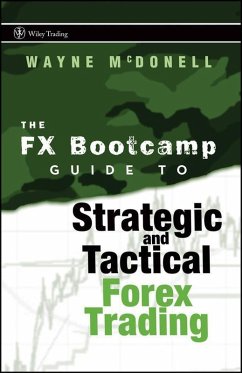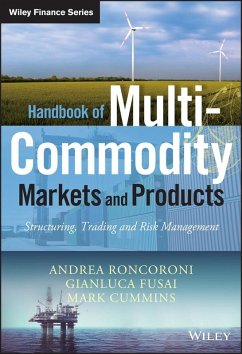
FX Options and Smile Risk (eBook, PDF)
Versandkostenfrei!
Sofort per Download lieferbar
72,99 €
inkl. MwSt.
Weitere Ausgaben:

PAYBACK Punkte
0 °P sammeln!
The FX options market represents one of the most liquid and strongly competitive markets in the world, and features many technical subtleties that can seriously harm the uninformed and unaware trader. This book is a unique guide to running an FX options book from the market maker perspective. Striking a balance between mathematical rigour and market practice and written by experienced practitioner Antonio Castagna, the book shows readers how to correctly build an entire volatility surface from the market prices of the main structures. Starting with the basic conventions related to the main FX ...
The FX options market represents one of the most liquid and strongly competitive markets in the world, and features many technical subtleties that can seriously harm the uninformed and unaware trader. This book is a unique guide to running an FX options book from the market maker perspective. Striking a balance between mathematical rigour and market practice and written by experienced practitioner Antonio Castagna, the book shows readers how to correctly build an entire volatility surface from the market prices of the main structures. Starting with the basic conventions related to the main FX deals and the basic traded structures of FX options, the book gradually introduces the main tools to cope with the FX volatility risk. It then goes on to review the main concepts of option pricing theory and their application within a Black-Scholes economy and a stochastic volatility environment. The book also introduces models that can be implemented to price and manage FX options before examining the effects of volatility on the profits and losses arising from the hedging activity. Coverage includes: * how the Black-Scholes model is used in professional trading activity * the most suitable stochastic volatility models * sources of profit and loss from the Delta and volatility hedging activity * fundamental concepts of smile hedging * major market approaches and variations of the Vanna-Volga method * volatility-related Greeks in the Black-Scholes model * pricing of plain vanilla options, digital options, barrier options and the less well known exotic options * tools for monitoring the main risks of an FX options' book The book is accompanied by a CD Rom featuring models in VBA, demonstrating many of the approaches described in the book.
Dieser Download kann aus rechtlichen Gründen nur mit Rechnungsadresse in D ausgeliefert werden.













